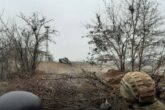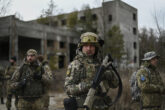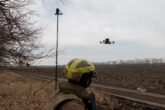February 09, 2018
NASA Needs a Politician More Than a Scientist for Its Chief
NASA is still in search of an Administrator. While Rep. Jim Bridenstine awaits the full Senate vote, it would be useful to think through the qualities that are necessary to be successful as NASA’s leader. Perhaps the best example is NASA’s second administrator, James Webb, whose first 40 days on the job serve as the standard by which all his successors have been measured.
In 1961 James Webb became the Administrator for the newly formed NASA. Prior to his appointment by President Kennedy, Webb had voiced his own concern that he was not the best person for the job and that “someone who knew more about rocketry, about space, would be a better person.” Webb, an experienced manager, attorney and businessman, had served as Director of the Bureau of the Budget and as Undersecretary of State, but possessed no real expertise related to the technical tasks NASA was designed to undertake. An intelligent man, Webb didn’t initially see the big picture and how he would eventually fit in it.
What is clear now is that when President Kennedy considered Webb for the position he wasn’t worried about technical expertise. The nation’s new young president didn’t want a NASA administrator who understood orbital mechanics or rocket science, Kennedy knew that the right person for the job would need to understand something far more complicated: Washington, D.C. politics. Soviet successes in space had proven the value of space as a political tool and Kennedy’s appreciation for the political implications of successful space flights informed his decision to select Webb. On February 14, 1961 James Webb become the second NASA administrator, and history reveals that he was the right pick.
Read the full article in Real Clear Science.
More from CNAS
-
Defense / Transatlantic Security
When Defense Becomes Destruction: Austria-Hungary’s Mistake and Ukraine’s RiskThis article was originally posted on War on the Rocks. The southeastern Polish city of Przemyśl, with its elegant 19th century Habsburg-era train station, remains one of the ...
By Franz-Stefan Gady
-
Defense / Transatlantic Security
Ukraine’s Catch-22 MomentThis article was originally published in the Financial Times. In Joseph Heller’s wartime classic, Catch-22, the protagonist Yossarian seeks out the US army surgeon Doc Daneeka...
By Franz-Stefan Gady
-
CNAS Insights | Budgetary Own Goals Undermine “Speed and Volume”
On November 7, Secretary of Defense Pete Hegseth laid out a plan to overhaul the Department of Defense’s (DOD’s) acquisition system. Placing an emphasis on delivering new capa...
By Philip Sheers, Carlton Haelig & Stacie Pettyjohn
-
Drones: Who Is Making the New Weapons of War?
From Ukraine and Russia to Gaza and Sudan, drones have become a key weapon of war. Which companies are making them, and profiting from this rapidly expanding but controversial...
By Stacie Pettyjohn




